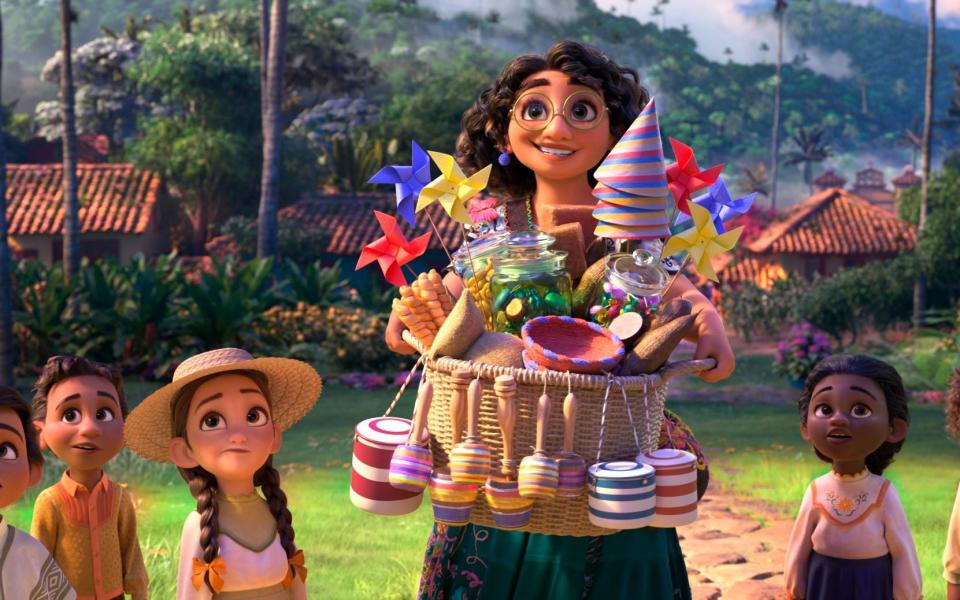Where have all the family movies gone?

Just five years ago, the summer blockbuster season lolled libidinously across more than half the calendar year. From the beginning of March to mid-September, hardly a week passed that didn’t bring a splashy new studio project - from Kong: Skull Island, a spectacular, all-star remake of the original King Kong, at the start of spring, to the chilling horror film It in the autumn.
In 2022, however, the sprawl is more of a hunch. Has it started yet, or have we already missed it? Recent box-office figures suggest that audiences are flocking back to cinemas – at least where big, bright, summery films are concerned. After a month on release, Top Gun: Maverick is about to enter the UK all-time top 20, and passed $1 billion globally this week. Jurassic World Dominion is thriving, despite homogeneously dreadful reviews. In its opening weekend, Elvis outpaced A Star is Born, and even came close to treading on Bohemian Rhapsody’s toes.
So how is Hollywood planning to capitalise? Good question: in mainstream terms, the next two months look Siberianly vacant. Yes, there’s more Marvel next week, in the strapping shape of Thor: Love and Thunder. And August offers two intriguing originals: Bullet Train, with Brad Pitt as an assassin hurtling across Japan by rail, and Jordan Peele’s enigmatic alien abduction chiller Nope. But three big releases in eight weeks is hardly the rousing all-back-to-the-movies rebound the industry has been touting for the last two years.
The pandemic is partly to blame. Jurassic World was the first blockbuster to resume shooting in 2020, while Top Gun was a pre-Covid holdover, but, in general, the major studios do not have the slate of films ready to go that they would normally have.
Things are especially bleak for families with younger children, who have just five films to tide them through the summer break. Pixar’s Lightyear and Illumination’s Minions: The Rise of Gru are already here, while The Railway Children Return and DC League of Super-Pets (a cartoon about Superman and Batman’s dogs) follow in July, and then in August, Tad The Lost Explorer And The Curse Of The Mummy – the third in an occasional series of animated Indiana Jones spoofs from Spain, whose not-exactly-raved-about predecessors were consigned to the February and October half-terms.
It stands in stark contrast to the summer of 2019, in which a major new family film materialised most weeks: Toy Story 4, the Lion King remake, Horrible Histories, branded animations featuring Angry Birds, Playmobil and UglyDolls, and the tween jungle escapade Dora and the Lost City of Gold.
“It used to be a bunfight between distributors to squeeze their films in,” one cinema programmer tells me. “But this year the multiplexes won’t have the content they need.”
Cinema executives blame the shortage not only on the pandemic but on the rise of streaming services, and, in particular, the incredible success of Disney+. The studio’s branded streaming platform launched in the UK just one week into the first 2020 lockdown, and has since made a point of offering subscribers launch-day access to three Pixar films (the excellent Soul, Luca and Turning Red) at home, at no additional charge.
“In the last two years, especially with the cost of living crisis, they’ve got used to the idea these little monthly charges will bring them all the entertainment they need,” a senior figure at a boutique cinema chain tells me, on condition of anonymity. “So convincing them to come back to us is proving harder than we’d hoped.”

From being central to its plans, cinema now feels like the junior partner in Disney’s distribution strategy. Even the release date of Lightyear, which Disney hasn’t made available on its streaming service yet, betrayed a lack of confidence in the big-screen experience, coming, as it did, exactly a month before English and Welsh state schools began their summer break.
“Call me cynical, but that suggests [Lightyear’s] arrival on Disney+ isn’t far off,” a programmer says, pointing to the release of last year’s hit, Encanto, on November 24 – and subsequent appearance on the platform on Christmas Eve.
In fact, the mystery over how long a Disney film will remain theatrically exclusive is leading to an increasingly strained relationship between the studio and British cinemas. “It’s not always clear they’re on our side,” one source says.
Lightyear’s performance at the box office hasn’t helped matters. Despite high hopes and a full theatrical roll-out, the animation, which tells the “origin story” of the Buzz Lightyear character from the Toy Story films, has enjoyed distinctly sub-Toy Story results.

The situation in the UK hasn’t been quite as bleak as in America, where the opening weekend takings were $50 million - a third short of expectations. But it was still only the third most popular film over here on its opening weekend and has fallen further down the charts since then.
Personally, I found Lightyear charmless, but in the field of children’s entertainment, charmlessness is no barrier to success: just look at – well, most children’s entertainment. But all the programmers I speak to agree the film seems obviously botched: they can imagine a version that would have killed, and this isn’t it.
One flags the awkward fit of this brooding, murky tale with the playful yet soulful Toy Story films, whose first generation of fans are now the grown-ups buying tickets. The problem here, they suggest, is twofold. Original Toy Story lovers couldn’t care less about ‘the real Buzz Lightyear’ – to us, the real Buzz Lightyear is the toy, not a character from some supposed 1990s film, as Lightyear would have us believe – while the choice to tack hard into science-fiction, with a story about being marooned on a gloomy, hostile planet, severely limits its appeal to younger viewers.
Another points to the widespread bafflement over what Lightyear is actually meant to be. An opening caption describes it as the film that made Toy Story’s Andy rush out and buy a certain action figure: essentially, his Star Wars. Yet the pre-release press fleshed out the backstory to torturous levels: actually, Lightyear was meant to be a 1980s sci-fi film Andy had discovered on VHS and which was later adapted into a children’s cartoon, and the toy spun off from that cartoon is the pompous, delusional action figure who later became Woody’s best friend.
Try explaining that to an eight-year-old who’s wondering why Buzz Lightyear doesn’t look, sound or behave anything like he used to. For a studio famous for its ingenious and conceptually watertight ideas, this just seems doomed to disappoint and confuse.
Meanwhile, a string of other children’s films are bypassing cinemas altogether. Apple TV+ has Luck, the first feature from ex-Pixar chief John Lasseter’s Skydance Animation, while Netflix has the latest Teenage Mutant Ninja Turtles film, bought in from Nickelodeon, plus their own critically acclaimed CG swashbuckler The Sea Beast.
Can cinemas compete? Absolutely. Minions: The Rise of Gru is a much better, more child-friendly film than Lightyear and has done relatively brisk business in advance bookings. Some cinemas are also currently screening The Sea Beast before it arrives on Netflix next week (and the cinema is without question the best place to see it).
But with July and August looming, parents need as many good reasons to pry their children from the sofa as they can find – and this year, Hollywood has rather left us in the lurch.

 Yahoo Movies
Yahoo Movies 